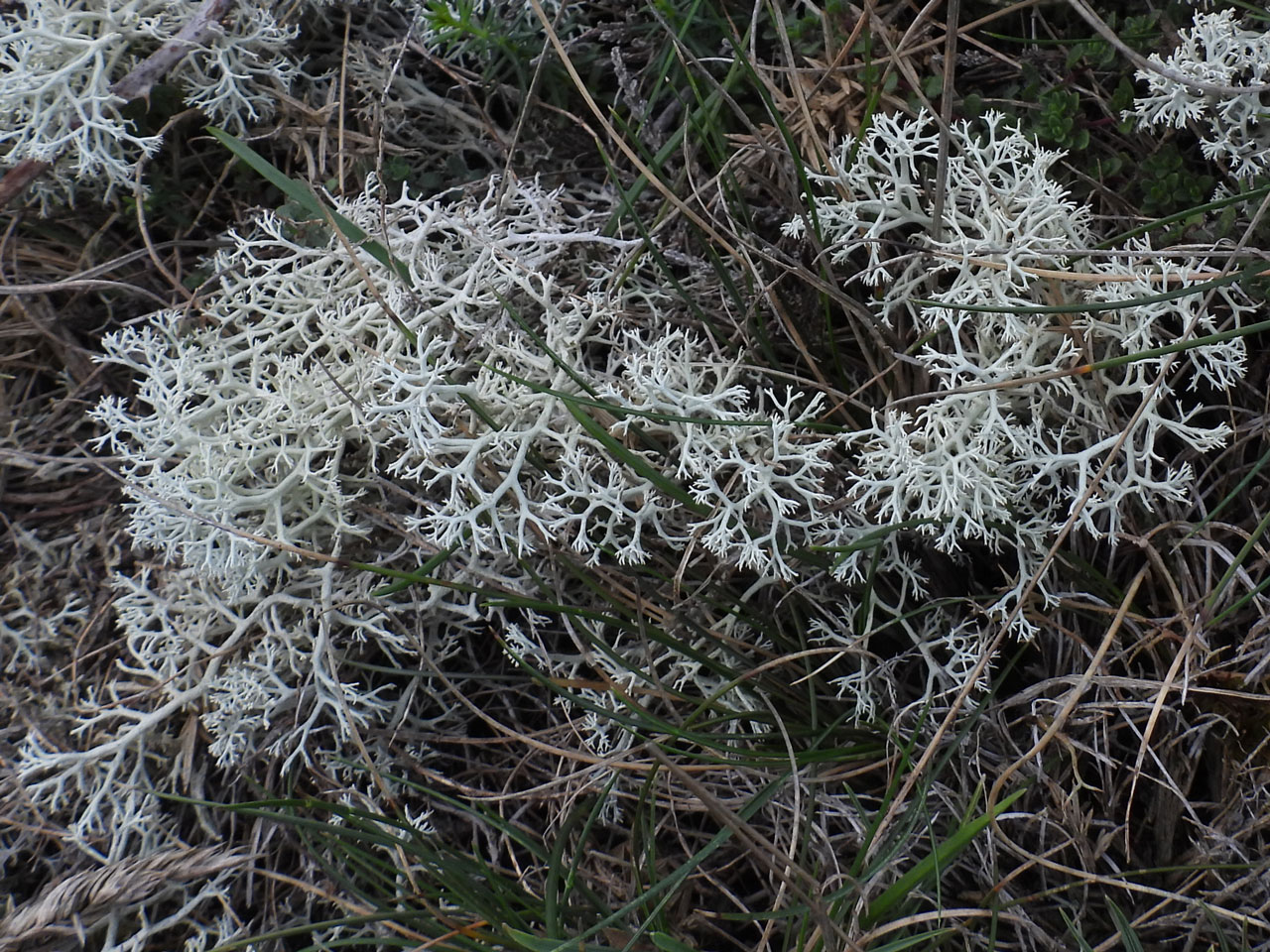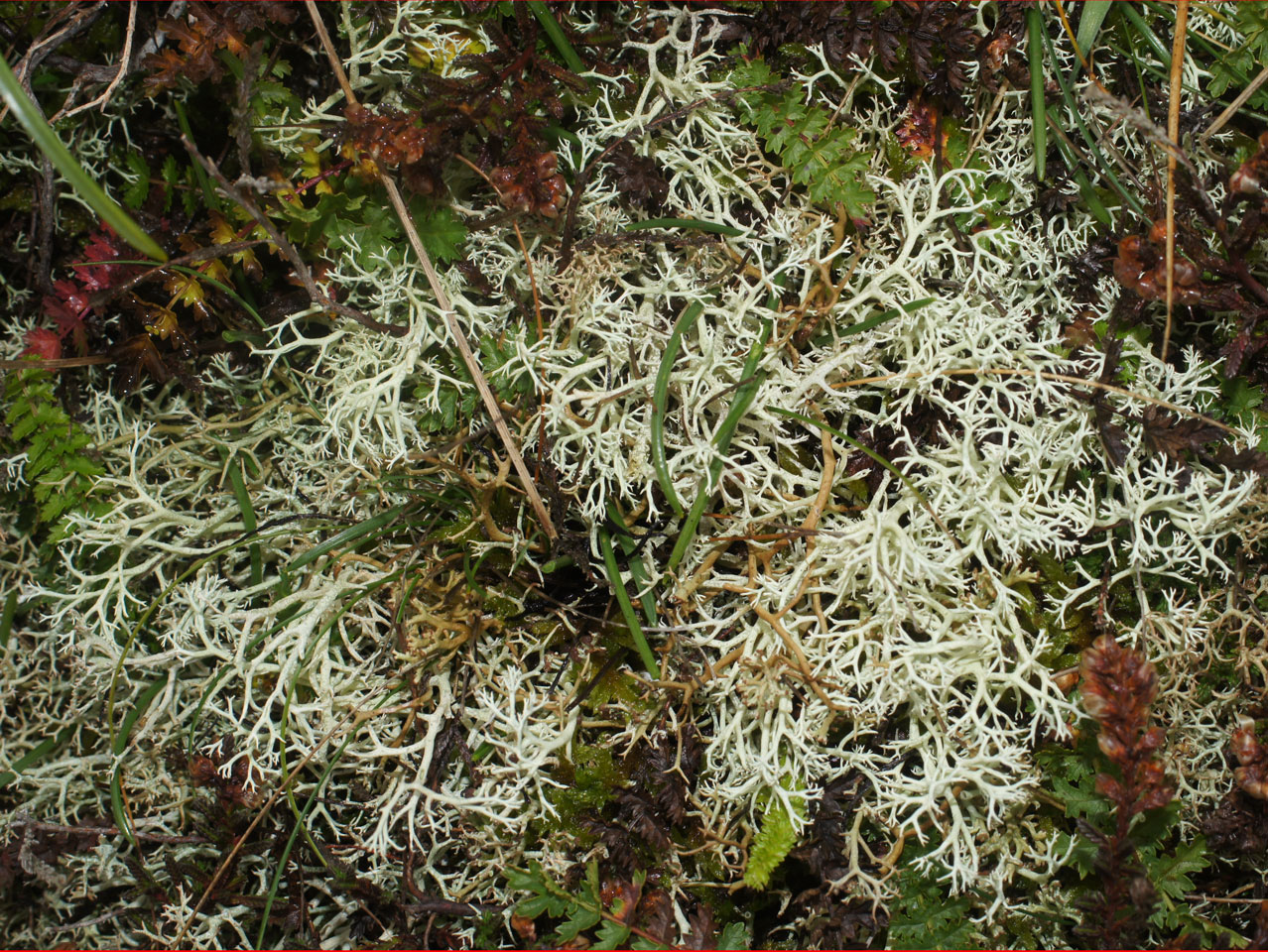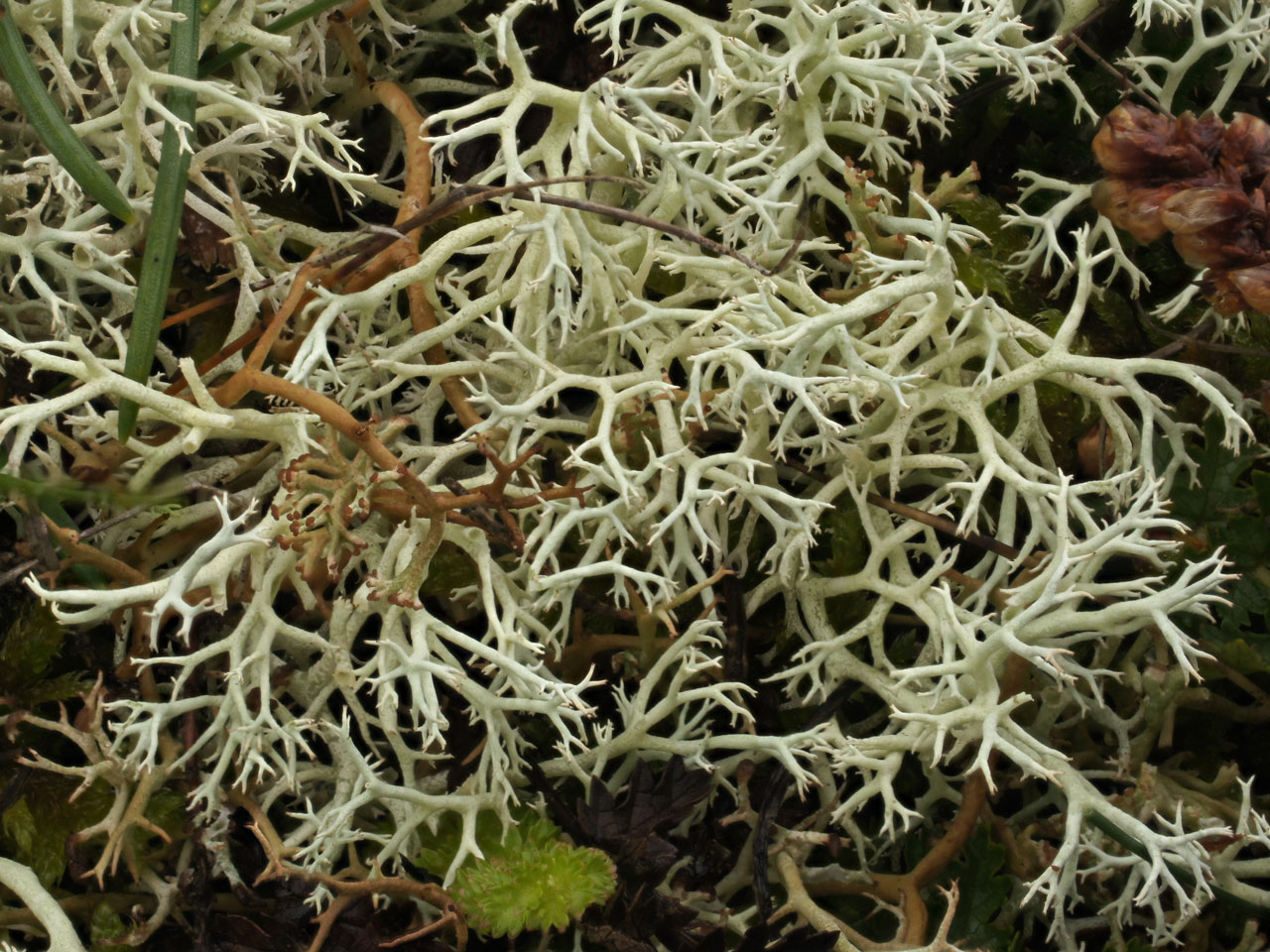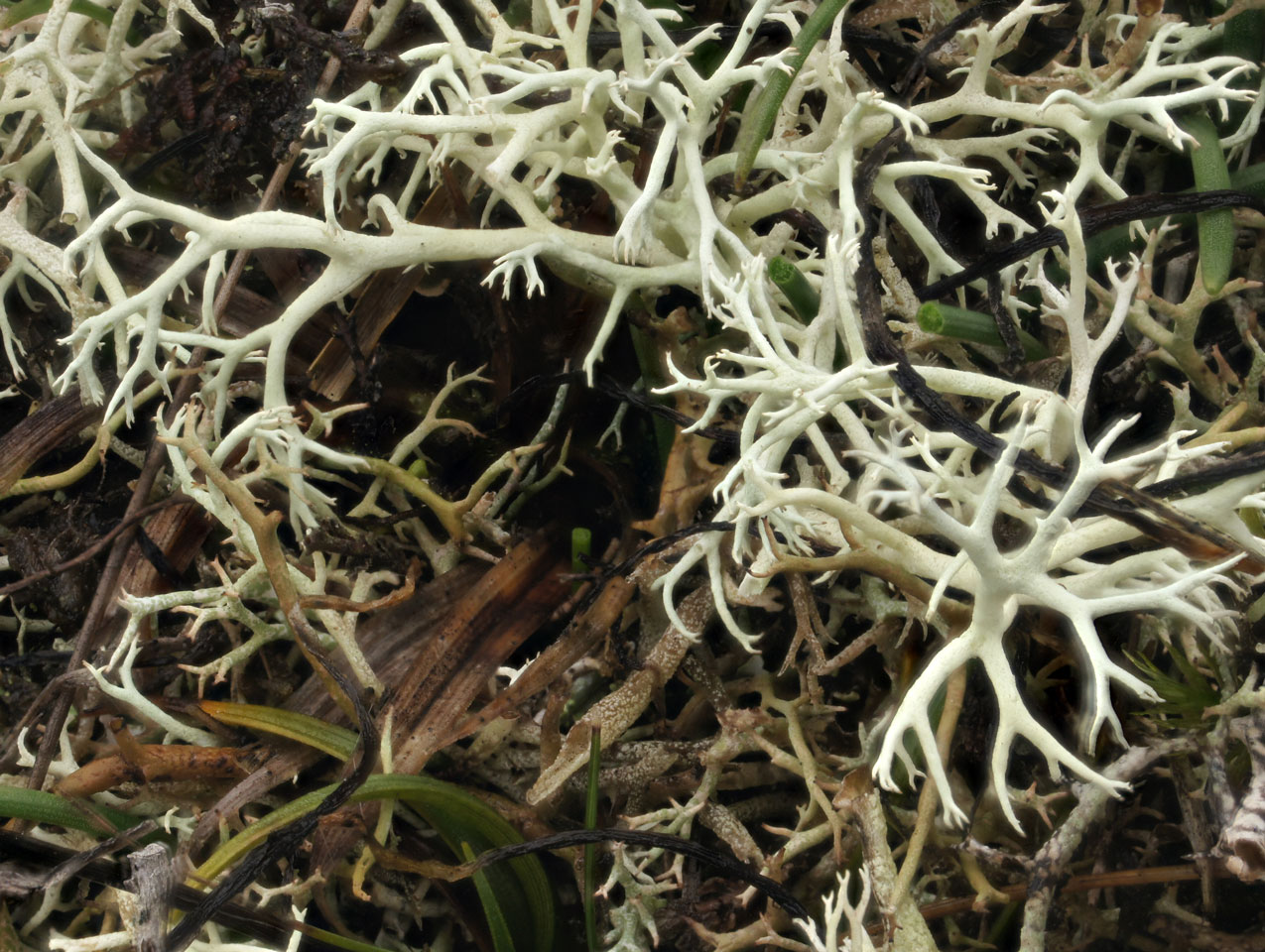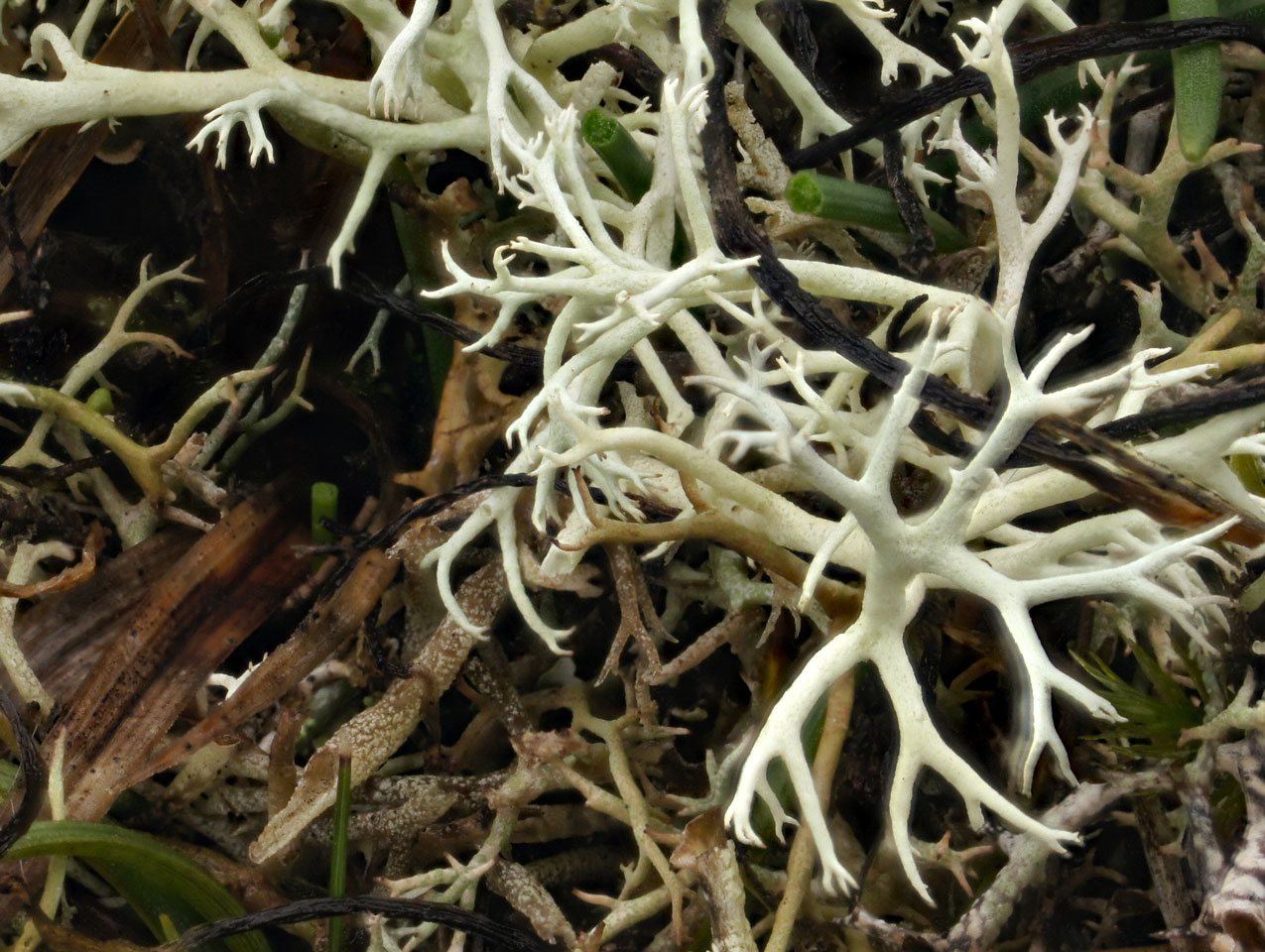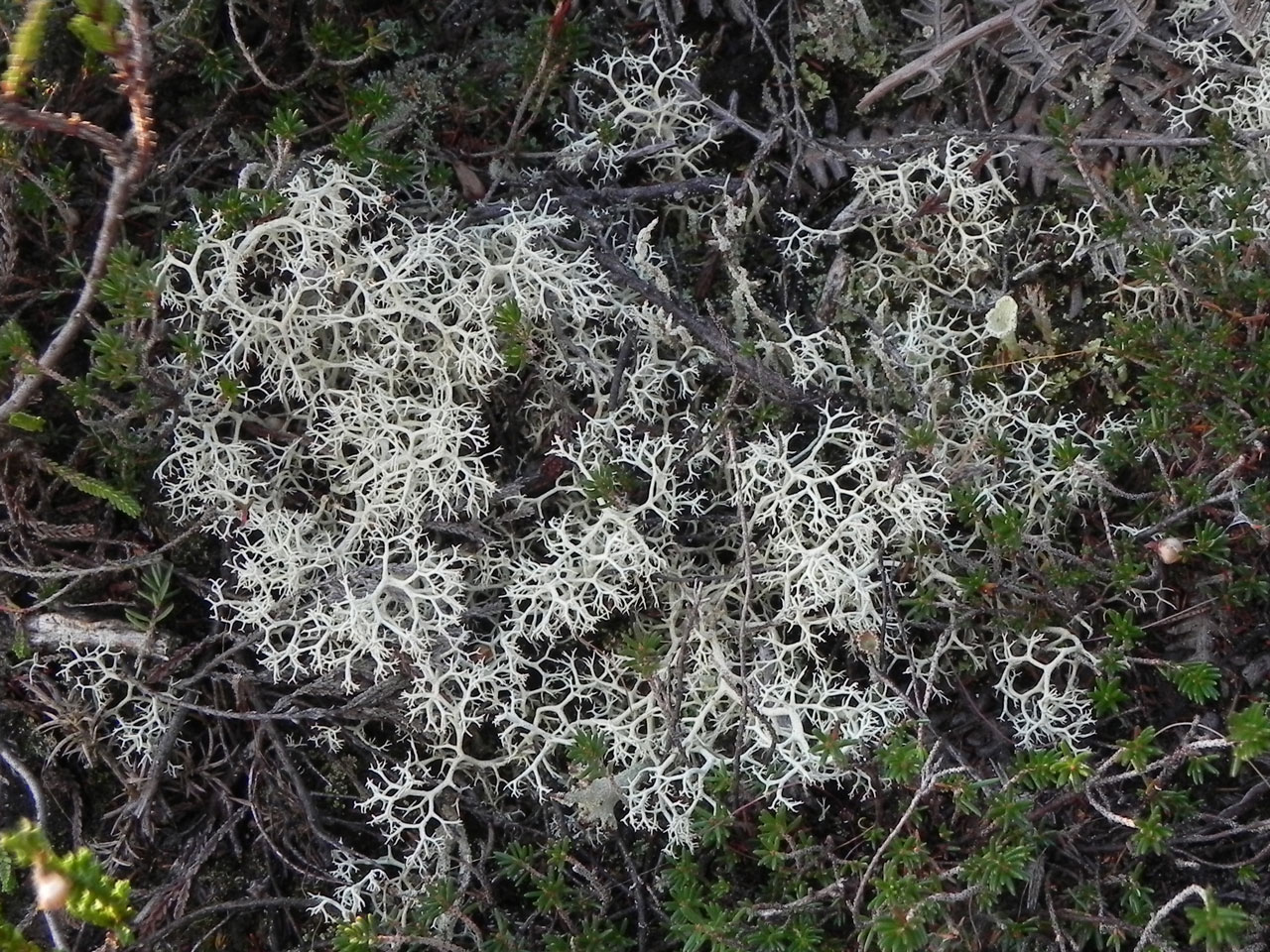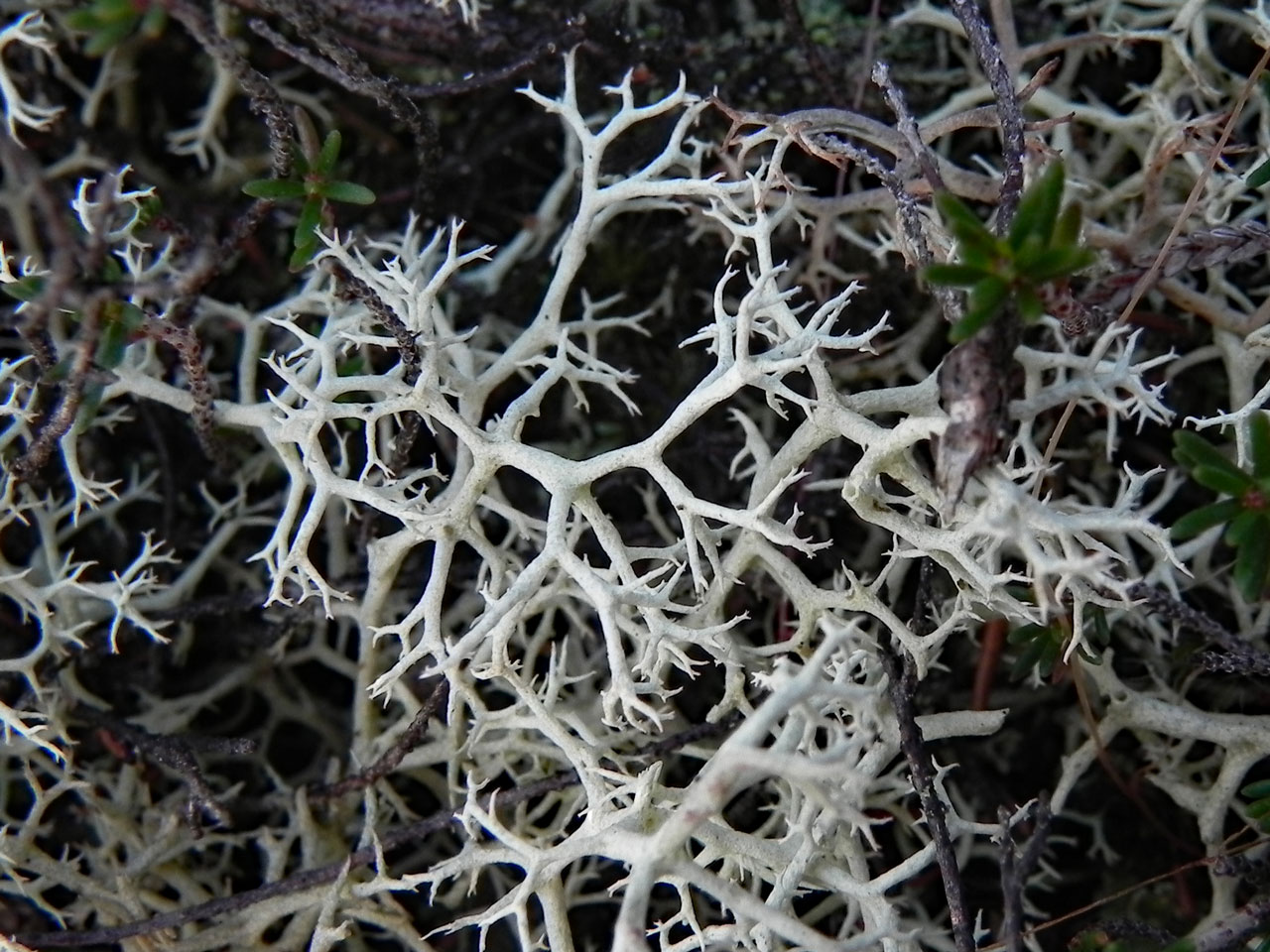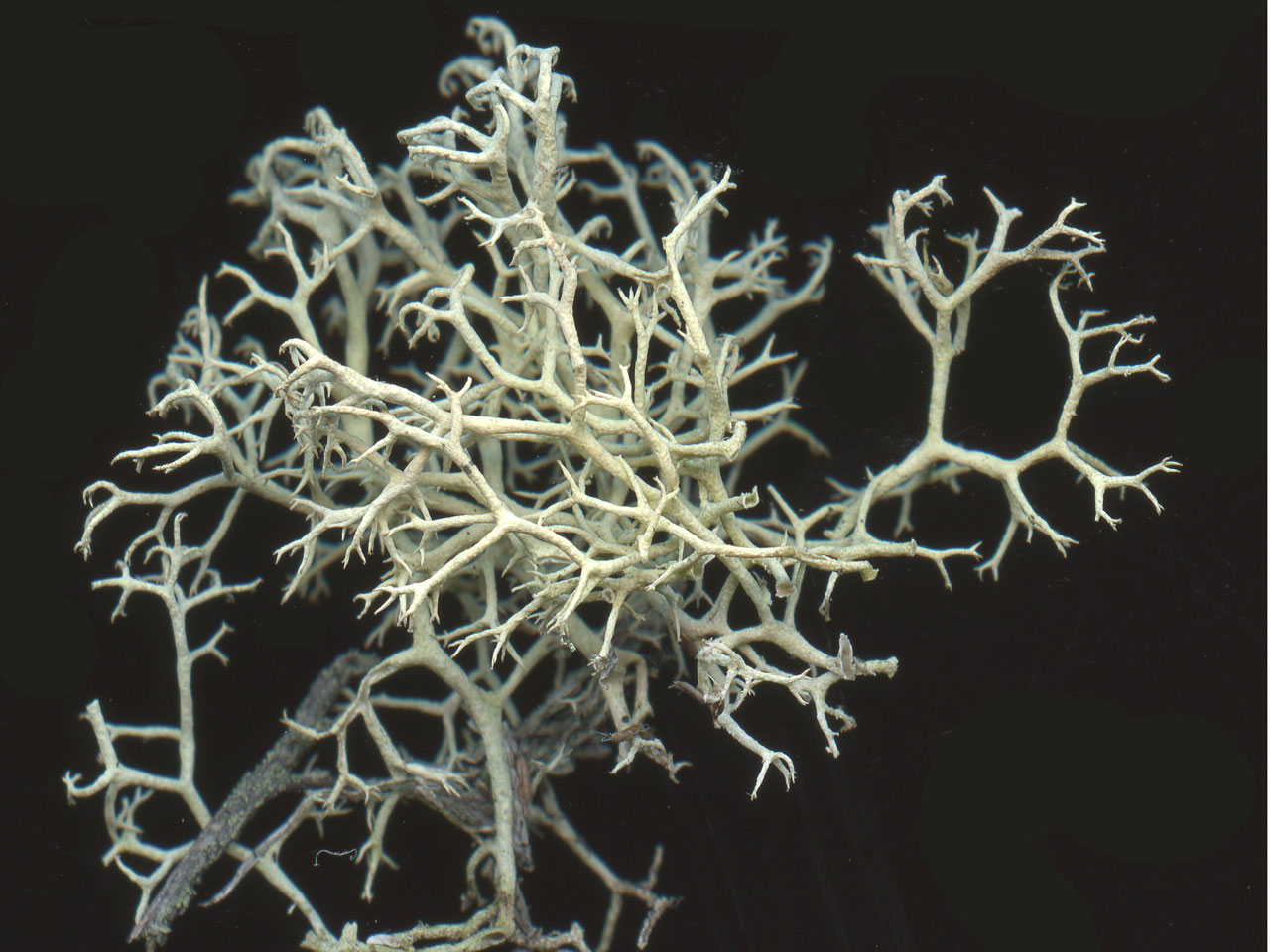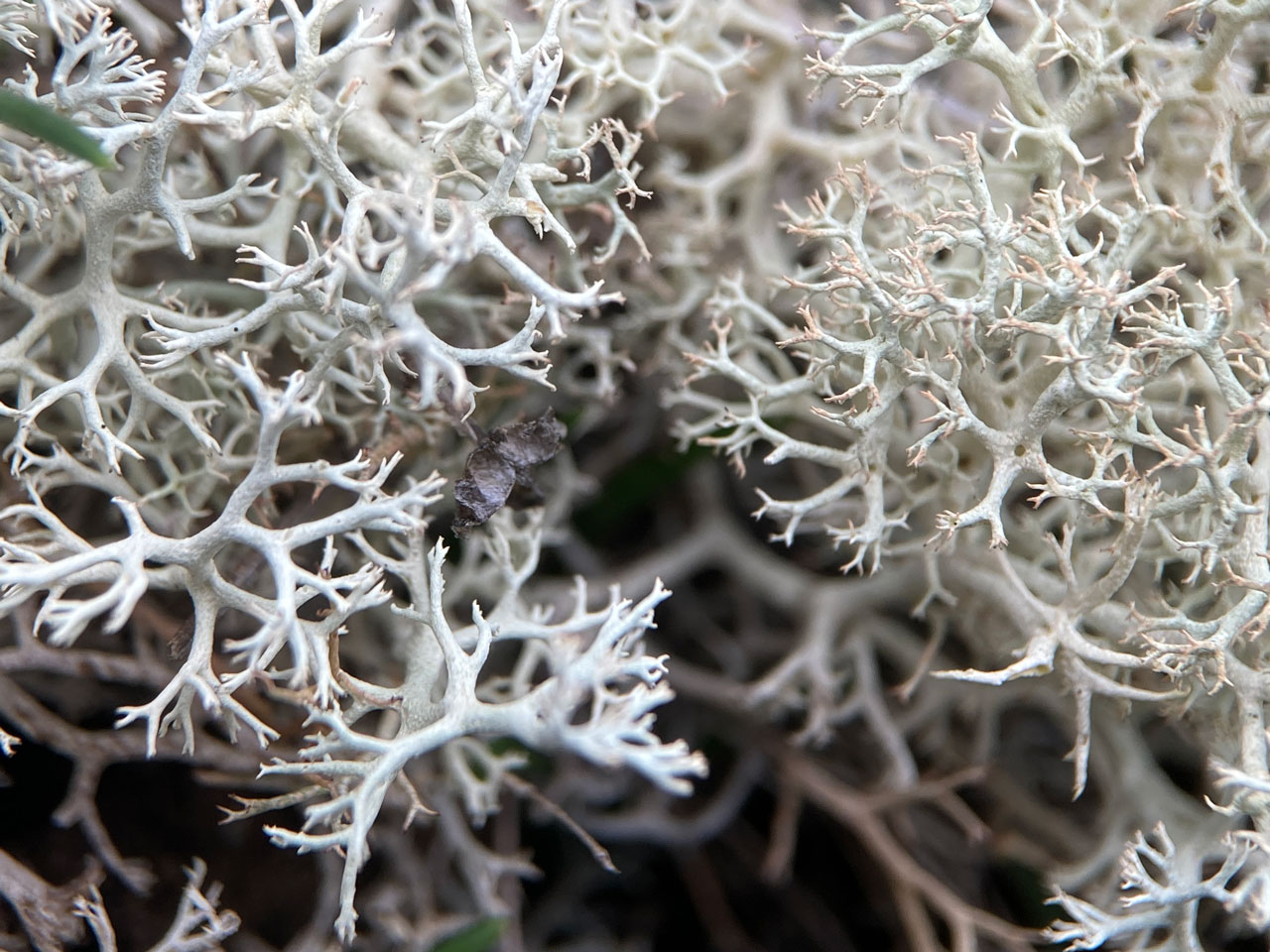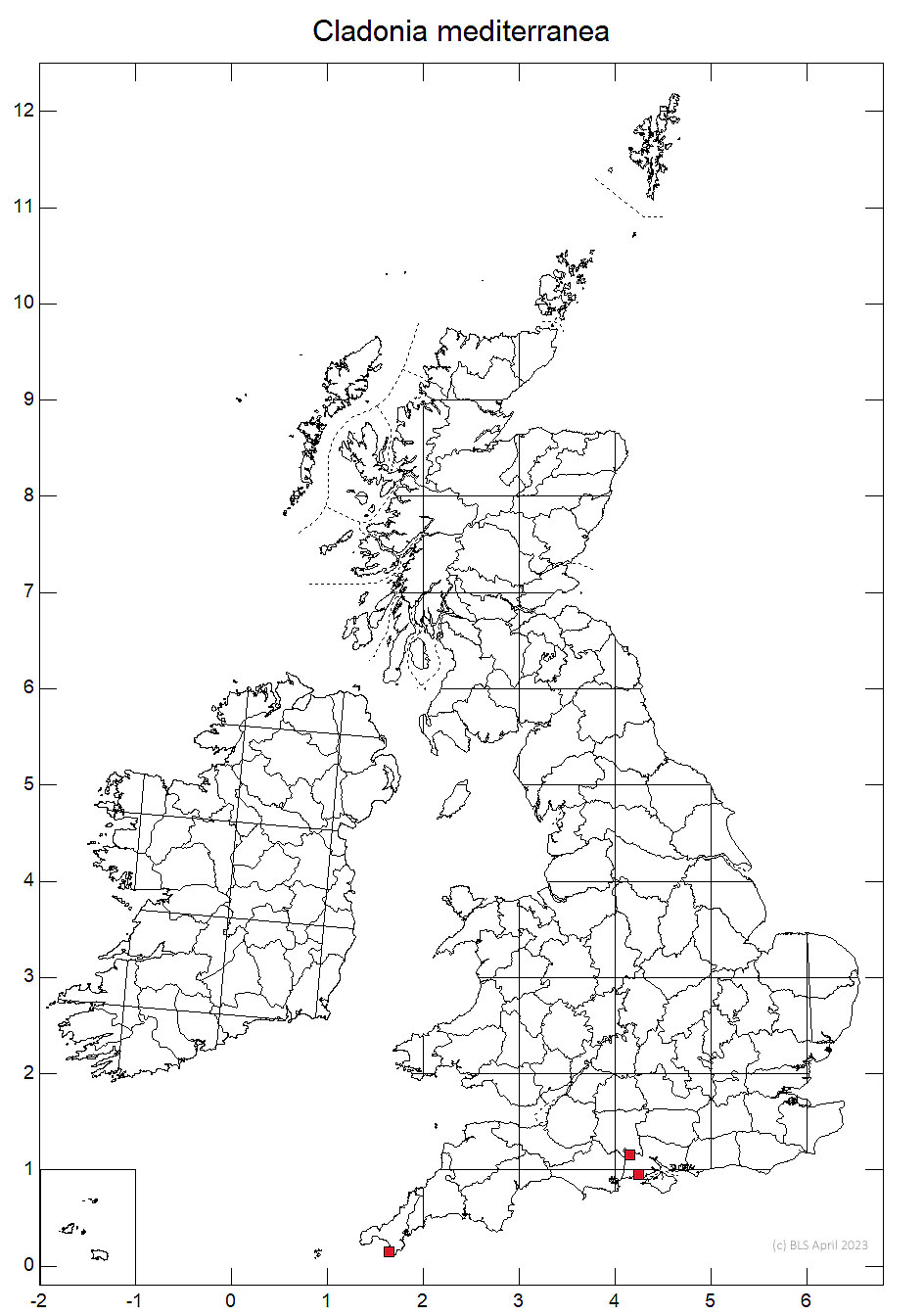A very rare Reindeermoss found in a few warm southern heaths. It has a similar chemistry to the very common Cladonia portentosa, but this is courser with predominantly trichotomous branching, a loose eroded cortex and frequent gaping axil holes. Cladonia mediterranea has predominantly dichotomous branching, a compact smooth and matt cortex and the axils closed or infrequently with small axil holes. The cortex differences give the two species podetia different colours, with Cladonia portentosa with a distinct greenish tinge as apposed to the sliver-white of Cladonia mediterranea. Potentially overlooked in other southern heaths and to be looked out for.
Like Cladonia portentosa, but with isotomic or subisotomic branching, predominantly dichotomous (particularly near the tips), with the axils closed or with a small hole and the surface of the podetia more compact, smooth and matt. Thallus C–, K–, KC+ yellow, Pd–, UV+ very bright blue-white at base of podetia (perlatolic, usnic acids).
The species was studied in detail by Pino-Bodas et al. (2016), and confirmed to be separate from Cladonia portentosa, which has a similar chemistry but with predominantly trichotomous branching, a loose eroded cortex and frequent gaping axil holes. ITS sequences were used to compare British and Mediterranean material by Russell et al. (2002), confirming the presence of the species in our region, but more detailed phylogenetic analysis would be useful. The cortex differences give the two species podetia different colours, with Cladonia portentosa with a distinct greenish tinge as apposed to the sliver-white of Cladonia mediterranea.
On acid to ± basic soils, the latter associated with serpentine, in short open vegetation in heathland.

Rare, S.W. England, confined to The Lizard peninsula and the New Forest, where it is uncommon. Potentially overlooked elsewhere on heathland in the south.
Vulnerable to vegetation over growth from under grazing in the Lizard and the associated wild fires. In well managed heath in the New Forest, but only small populations known.
Britain: Critically Endangered
England: listed in Section 42
Pino-Bodas, R., Pérez-Vargas, I., Stenroos, S., Ahti, T. & Burgaz, A.R. (2016). Sharpening the species boundaries in the Cladonia mediterranea complex (Cladoniaceae, Ascomycota). Persoonia 37: 1–12.
Pino-Bodas, R., Sanderson, N., Cannon, P., Aptroot, A., Coppins, B., Orange, A. & Simkin, J. (2021). Lecanorales: Cladoniaceae, including the genera Cladonia, Pilophorus and Pycnothelia. Revisions of British and Irish Lichens 19: 1-45. Link
Russell, S.J., Rumsey, F.J. & Purvis, O.W. (2002). Determining the identity of British material referred to Cladonia mediterranea Duvign.& des Abb. A molecular study. Unpublished report, Natural History Museum (London). 9 pp.
Text by Neil A Sanderson based on Pino-Bodas et al (2021)
